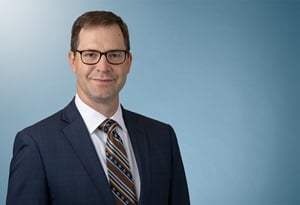Supreme Court Decides Bilski v. Kappos
On June 28, 2010, the Supreme Court decided Billski v. Kappos, No. 08-861, holding that (1) the machine-or-transformation test is a useful and important clue for determining whether some claimed inventions are patentable processes under 35 U.S.C. §101, but it is not the sole test for deciding patent eligibility; (2) business methods are not categorically excluded from being patentable processes, but they are also not broadly patentable; and (3) the concept of hedging claimed by Bilski was an unpatentable abstract idea.
Bernard L. Bilksi and Rand A. Warsaw (collectively, "Bilksi") applied for a patent on a claimed invention explaining how buyers and sellers of commodities in the energy market can hedge against the risk of price changes. Claim 1 proposed a three-step concept for accomplishing the hedging. Claim 4 expressed the concept as a mathematical formula. Other claims applied the concept to more particular situations.
By the time the case reached the Supreme Court, three levels of decision makers had unanimously rejected the patent application: the patent examiner, the Board of Patent Appeals and Interferences, and the Federal Circuit, which had sua sponte decided to hear the appeal en banc. The en banc Federal Circuit held that a claimed process is patentable under 35 U.S.C. §101 if "(1) it is tied to a particular machines or apparatus, or (2) if it transforms a particular articles into a different state or thing." The majority concluded that this test—the "machine-or-transformation test"—was the "sole test" governing claimed processes. Two Federal Circuit judges dissented on this rationale, one advocating a rule excluding business methods from patentability, and another arguing that Bilski's patent should be denied because the claims were an unpatentable abstract idea. One other judge dissented on the result.
The Supreme Court affirmed the judgment but adopted a different basis for decision than the Federal Circuit majority. The Court held, first, that because the text of §101 provided for the patenting of "any new and useful process," it would be unduly restrictive to adopt the machine-or-transformation test as the sole test for patentability, because nothing in the ordinary, contemporary, common meaning of "process" limits the term in that way. Historically, the Court had recognized only three general exclusions from patentable subject matter: laws of nature, physical phenomena, and abstract ideas. The Court had treated the machine-or-transformation test as a useful and important clue, an investigative tool, for determining whether some claimed inventions are patentable processes under 35 U.S.C. §101. That is the role the test should continue to have. It is "not the sole test for deciding whether an invention is a patent-eligible ‘process.'"
Second, the Court also rejected "the broad contention that the term ‘process' categorically excludes business methods." Section 100(b) expressly defines "process" to include a "method." And Section 273(a)(3) allows an alleged infringer to raise prior use of "a method of doing or conducting business" as a defense against alleged infringement of a method claim. These textual provisions mean that the courts must "leave open the possibility of some business method patents." But they do "not suggest broad patentability of such claimed inventions."
Finally, the Court resolved the case before it "narrowly" on the basis of prior decision showing "that [Bilski's] claims are not patentable processes because they are attempts to patent abstract ideas." The concept of hedging, held the Court, is an unpatentable abstract idea. That Bilksi proposed using this abstract idea in the particular field of energy markets did not, and could not, alter the unpatentable nature of the original idea.
As Justice Breyer explained in a separate opinion, in which Justice Scalia joined, there are four principles on which the Court unanimously agreed. First, although the text of §101 is broad, it is not without limits. Second, for process claims that do not include a particular machine, transformation and reduction of an article to a different state or thing is "the clue" to patentability. Third, the machine-or-transformation test is an "important example of how a court can determine patentability under §101," but is not the "exclusive test." Fourth, the Court unanimously rejected the Federal Circuit's old State Street Bank test, under which anything that produced a "useful, concrete, and tangible result" was patentable.
Justice Kennedy delivered the opinion of the Court, in which Chief Justice Roberts and Justices Scalia, Thomas, and Alito joined, except for two sections of dictum addressing how the opinion's rules might apply to "Information Age" patents, in which Justice Scalia did not join. Justice Stevens filed an opinion concurring in the judgment, in which Justices Ginsburg, Breyer, and Sotomayor joined, explaining that he would have decided the case by holding that business methods are not patentable. Justice Breyer filed an opinion concurring in the judgment, in which Justice Scalia joined as to the rationale.


